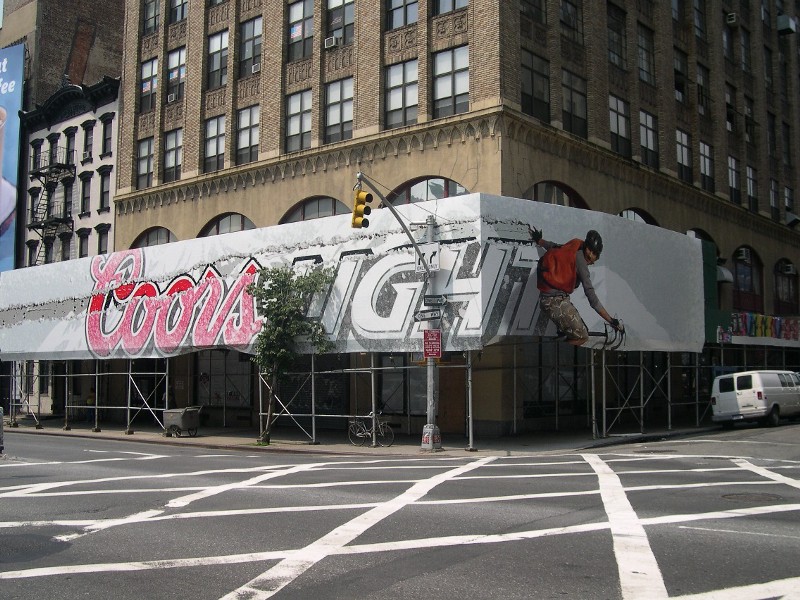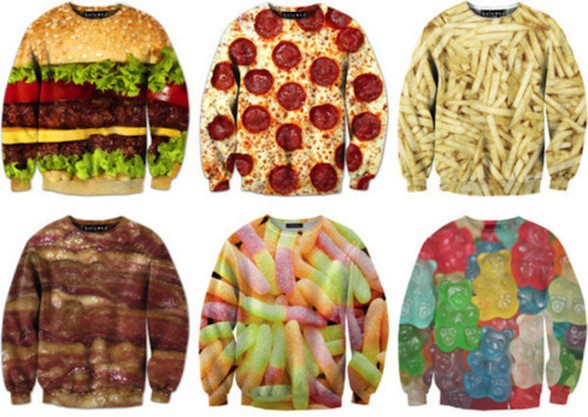Fake Can Be Just as Good
When I first started working in advertising, not long after the dot-com crash, the industry was weirdly infatuated with bike messengers. Copywriters and designer stared wistfully from their desks whenever a courier arrived, lustily noting their Chrome messenger bags and fixed-gear bikes. It was not uncommon to find an ex-coworker delivering your contracts.
This romance bled into our work. Making advertisements with bike messengers was perhaps the most common way to imbue corporations with Authenticity. From Pabst to Coors, Lincoln to Mercedes, messengers were everywhere.
 The bike messenger was the perfect myth for America in the 2000s. The cowboy reborn for the post-bubble era. There was no greater symbol of authenticity.
The bike messenger was the perfect myth for America in the 2000s. The cowboy reborn for the post-bubble era. There was no greater symbol of authenticity.
But our fascination faded. Ubiquity lessened the messenger’s totemic value (if Coors is using bike messengers, why bother?), but we also discovered the truth behind messengers: they were generally miserable. They lacked health care, barely made money, and were injured at a fantastic rate. Some advertisers tried to mitigate this negativity (I remember a couple who looked into providing health care) but in general, the thrill was gone. Today, our romance with messengers survives as a vestigial interest in fixies.
It’s odd to consider our infatuation with bike messengers in light of our Uber anxieties.
In barely a decade we’ve gone from venerating on-demand service workers to wringing our hands with concern for their well being. There are more messengers than ever, they just “work” for Postmates, Seamless, and TaskRabbit.
It’s interesting how long we loved bike messengers. Today, their injuries and exploitation would be the subjects of many an article. Uber drivers and other on-demand service workers we never the subject of our longing. As soon as we met them we were presented countless examples of their troubles.
In this era of ubiquitous information can anything be Authentic for more than a moment?
Our infatuations are Googled and shared, producing signals which are picked up by publishers and advertisers, spurring them to create content to meet our demands. We swim so much information that nothing can remain Authentic for long. Eventually we realize everything is complex, conflicting, and messy.
With enough information, everything is revealed as Fake.
Fake is the new normal.
Let’s consider a few examples:
- Your whiskey is “probably from a factory distillery in Indiana.”
- Your artisan chocolate is probably “remelted, mass produced chocolate.”
- Your favorite vlogger is probably struggling to get by. In all of these cases, “fake” is very specifically defined as in-authentic. The end product could be good, but the story might not be. This usage of fake is very different than “fake” as nonexistent: the product and story are bad.
In case you were curious, here are some examples of fake as nonexistent:
- Your restaurant and product reviews are probably paid for.
- Your web traffic is likely fraudulent.
- Your extramarital affair partner doesn’t exist. In all of these cases the story and its subject are bad. I am not suggesting that everything will be revealed as nonexistent fake (though recent advances in deep learning will certainly increase the liklihood of robots masquerading as humans!)
If everything will eventually be revealed as in-authentic, will we still aim for authenticity?
Perhaps not. Perhaps this realization is what birthed normcore, snackwave, and their ilk. If anything attempting to appear authentic will eventually be revealed as fake, why not stick with the mundane?
